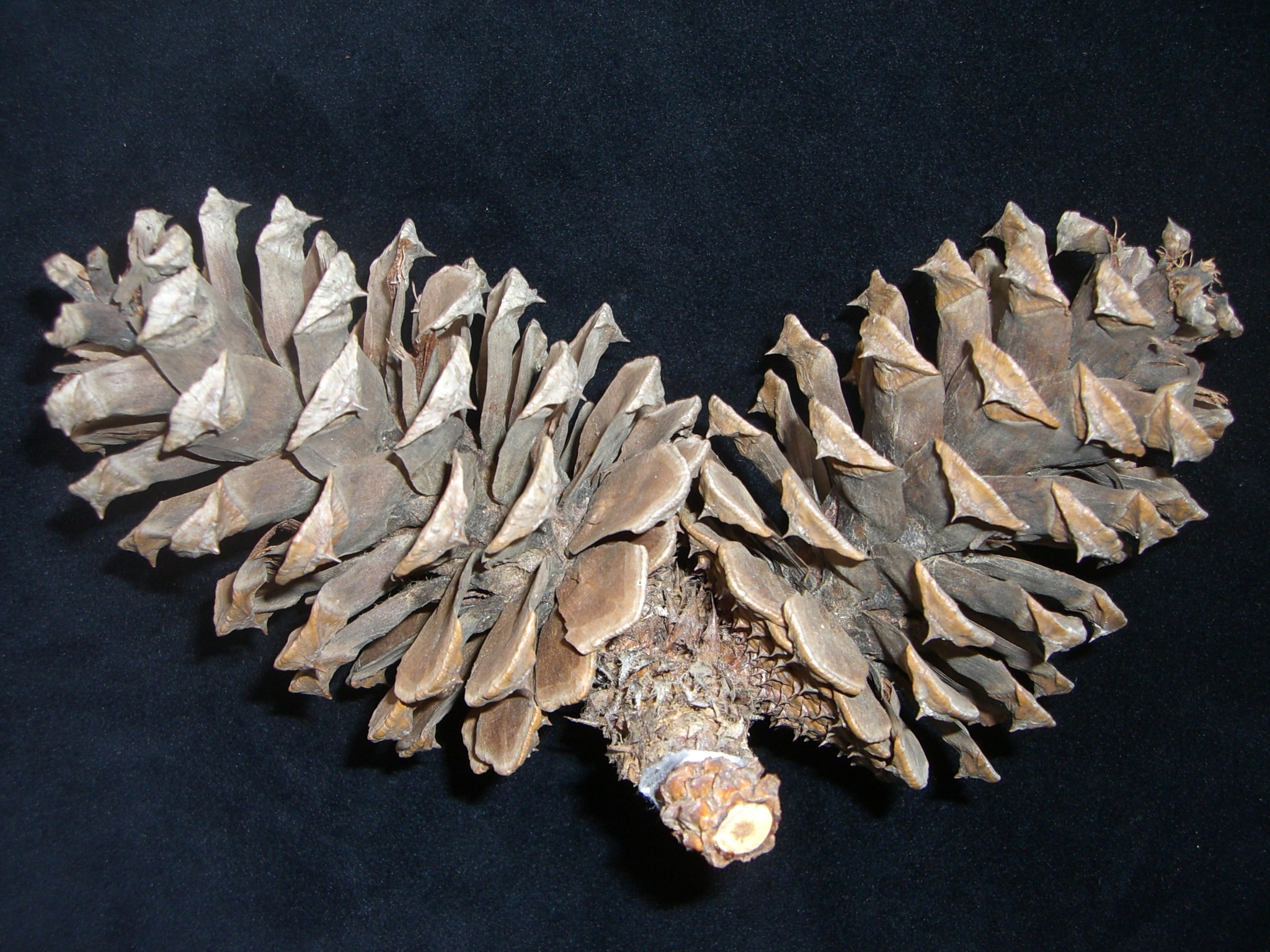
Open tree to about 35 m tall with ascending branches. Bark orange-brown peeling in large strips which are covered with small, papery flakes. Buds 3 cm or more long with fringed, white scales. Young shoots orange-brown. Leaves in 3's, 20-35 cm long, dark green; sheaths persistent, 2-2.5 cm long. Cones conic-cylindric, 15-25 cm long; scales thin with a prickle that points straight out or is bent back. Seed 1 cm long, wing about 3 cm long.
Few mature specimens known in cultivation in Australia. Occasionally offered in the nursery trade and sometimes grown as a tub plant.
SE USA where it grows naturally in sandy or gravelly soils to altitudes of about 600 m.
A valuable timber tree in America.
Leaves long, forming tufts at the ends of the branches; buds large, white, 3-5 cm long, fringed; cones narrow, pale brown; cone scales with reflexed prickles. Scales are often left behind on the stem when the cones are removed. Similar to P. ponderosa in many ways but bark with papery flakes, hardly jigsaw-like; leaves mostly more than 25 cm long; buds larger, white and fringed; cones larger, mostly more than 15 cm long and cylindrical.
NSW: Orange (Orange Golf Club, 'Duntryleague' 30 m along driveway inside entrance). VIC: Melbourne (Royal Bot. Gds below the Craft Cottage a large tree 33 m tall, trunk clear for 12 m, probably part of the original Mueller pinetum and well over 100 years old).
Source: (1995). Pinaceae. In: . Horticultural Flora of South-eastern Australia. Volume 1, Ferns, conifers & their allies. The identification of garden and cultivated plants. University of New South Wales Press.
